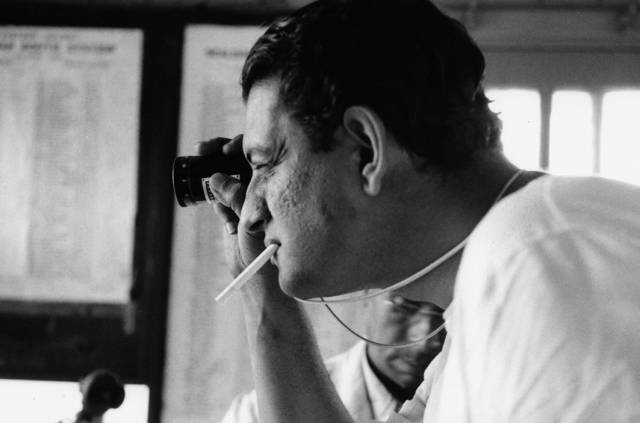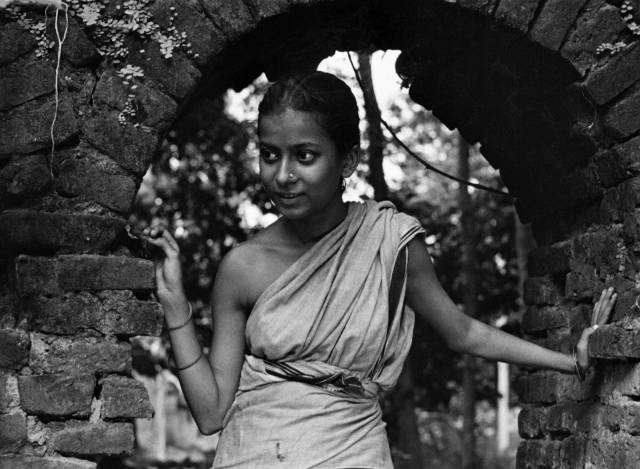
 After watching Jean Renoir’s The River and Vittorio De Sica’s Bicycle Thieves, a young Satyajit Ray felt compelled to make a film out of Bibhutibhushan Banerjee’s novel Pather Panchali, the first in a series of beloved books by the Bengali author. In 1955 he released an eponymous film, which by the end of the 1950s would conform the first installment in a trilogy about the life of Apu (Pather Panchali, Aparajito, Apur Sansar), who goes from being a young country boy to becoming a father. The trilogy represents an astonishing achievement for multiple reasons which include economic, cultural and aesthetic, for not only was it produced on a shoestring budget, it also went to be considered perhaps the greatest bildungsroman of all time. To coincide with the 60th anniversary of Pather Panchali, Janus Films restored the trilogy and will exhibit the films in theaters throughout the country. In New York, the films will be shown at Film Forum in a limited run from May 8 to May 28. Here are five reasons why this might just be the most important cinematic release of the year:
After watching Jean Renoir’s The River and Vittorio De Sica’s Bicycle Thieves, a young Satyajit Ray felt compelled to make a film out of Bibhutibhushan Banerjee’s novel Pather Panchali, the first in a series of beloved books by the Bengali author. In 1955 he released an eponymous film, which by the end of the 1950s would conform the first installment in a trilogy about the life of Apu (Pather Panchali, Aparajito, Apur Sansar), who goes from being a young country boy to becoming a father. The trilogy represents an astonishing achievement for multiple reasons which include economic, cultural and aesthetic, for not only was it produced on a shoestring budget, it also went to be considered perhaps the greatest bildungsroman of all time. To coincide with the 60th anniversary of Pather Panchali, Janus Films restored the trilogy and will exhibit the films in theaters throughout the country. In New York, the films will be shown at Film Forum in a limited run from May 8 to May 28. Here are five reasons why this might just be the most important cinematic release of the year:
 5) Technical achievements.
5) Technical achievements.
Although times have certainly changed, The Apu Trilogy is a landmark of independent film production. The first film was made on a budget of about 30,000 USD and meant that Ray had to recruit a mostly amateur crew and cast. Within the film then are complete master classes in adapting literature into film, working with child actors, casting actors to play the same characters at different ages. Aparajito, the second film in the trilogy eve introduced bounce lighting, in order to recreate daylight in closed sets.
 4) It’s one of the most influential trilogies of all time.
4) It’s one of the most influential trilogies of all time.
Filmmaker Francois Truffaut dismissed the original film for being about “peasants who eat with their hands”, ironically by the 1970s The Apu Trilogy seems to have been the model after which he shaped his own series of films starring Jean-Pierre Léaud as Antoine Doinel, who we follow from being a little troublemaker to becoming a parent. From Richard Linklater’s Boyhood to John Boorman’s Hope and Glory and Queen and Country, and Giuseppe Tornatore’s Cinema Paradiso, Ray’s work continuously manifested itself in the films of other artists.
Before The Apu Trilogy, Ravi Shankar was practically unknown in the West. He was quite well known in India and had been friends with Ray for over a decade which is why he approached him about composing the score for his first film. Legend has it that Shankar recorded the entire score to Pather Panchali during the course of a single night, and his decision to only use Indian instruments (the sitar, the bhimraj and the tarshehnai most prominently) makes the score instantly recognizable. The score to the films introduced Shankar to The Beatles by way of The Byrds.
 2) Karuna Banerjee as Apu’s mother.
2) Karuna Banerjee as Apu’s mother.
Banerjee gives perhaps one of the most moving performances of all time as Apu’s devoted mother, Sarbajaya, who throughout the films endures pain and joy that come in equally devastating and exciting waves. In Pather Panchali we see her give a dignified, proud performance as a poor woman who wants her children to become decent adults. She’s playful with the little actor playing Apu (Subir Banerjee) and more severe with the actresses who play her rebellious daughter Durga (Runki Banerjee and Uma Dasgupta). In scene after scene Ms. Banerjee’s Sarjabaya creates and entire world that seems to have always inhabited. Watching her emotive eyes one almost doesn’t even need to read the subtitles, she ultimately becomes the epitome of an onscreen mother in the way Greer Garson, Irene Dunne and Shirley MacLaine became in classic Hollywood films.
Exquisite wouldn’t even begin to describe the experience of watching what Janus and The Criterion Collection have done with The Apu Trilogy. Every frame has been meticulously cleaned and restored, to the point where it seems it was shot just yesterday. All the more impressive is the fact that they were able to restore the films after a fire devastated the original negatives in 1993. Working together with The Academy Film Archive and L’Immagine Ritrovata who used duplicate negatives preserved by by Janus Films, the Academy, the Harvard Film Archive, and the British Film Institute, the three films were restored with the idea of making them look like Ray intended back in the 1950s. The result is miraculous.
For tickets and more information visit Film Forum.